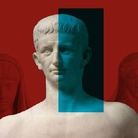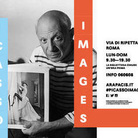Ara Pacis Museum
Roma, Lungotevere in Augusta
- Address: Lungotevere in augusta
- E-Ticketing WWW: http://www.omniticket.it
- E-Mail: info.arapacis@comune.roma.it
- Phone#: +39 06 0608
- Opening: Tue.-Sun. from 9am to 7pm. Monday closed
- Price: full € 9 - reduced € 7
DESCRIZIONE:
The Museum of the Altar of Peace is the first architectural work to have been built in the historic centre of Rome from the fall of Fascism until the present day. The project was carried out by Richard Meier and Partners Architects, who have designed several of the most noteworthy museums of the second half of the twentieth century.
The Altar of Peace is one of the finest examples of classical art. The Roman Senate voted for its construction in 13 B.C., to honour Augustus' return from the Provinces of France and Spain, where the emperor had been for the previous three years, consolidating both his own personal power and that of Rome, creating new roads and founding colonies. The altar was built next to the Via Flaminia, at the northernmost edge of the Field of Mars, but the alluvial nature of the ground and the repeated flooding of the Tiber, leaving layers of lime across the area, meant that the Altar was soon buried, and its memory lost completely. The bimillenium of Augustus? birth fell in 1937/8 and the decision was taken to rehabilitate the monument.
The project was entrusted to the archaeologist Giuseppe Moretti, and was achieved in the summer of 1938, inside a pavilion on the Via di Ripetta, built in great haste and based on a design by the architect Ballio Morpurgo.
The combination of its position on the Lungotevere and the inadequacy of the building it was housed in put the Altar of Peace at risk: it could not be protected from damage from traffic, exhaust gases, overheating, rising humidity and, finally, the oily and acidic dust which was being deposited on the marble and plaster surfaces.
The new museum complex has therefore been designed with a view to the monument?s conservation as well as to the atmosphere it creates. It also includes an anti-earthquake system.
The Museum of the Altar of Peace is the first architectural work to have been built in the historic centre of Rome from the fall of Fascism until the present day. The project was carried out by Richard Meier and Partners Architects, who have designed several of the most noteworthy museums of the second half of the twentieth century.
The Altar of Peace is one of the finest examples of classical art. The Roman Senate voted for its construction in 13 B.C., to honour Augustus' return from the Provinces of France and Spain, where the emperor had been for the previous three years, consolidating both his own personal power and that of Rome, creating new roads and founding colonies. The altar was built next to the Via Flaminia, at the northernmost edge of the Field of Mars, but the alluvial nature of the ground and the repeated flooding of the Tiber, leaving layers of lime across the area, meant that the Altar was soon buried, and its memory lost completely. The bimillenium of Augustus? birth fell in 1937/8 and the decision was taken to rehabilitate the monument.
The project was entrusted to the archaeologist Giuseppe Moretti, and was achieved in the summer of 1938, inside a pavilion on the Via di Ripetta, built in great haste and based on a design by the architect Ballio Morpurgo.
The combination of its position on the Lungotevere and the inadequacy of the building it was housed in put the Altar of Peace at risk: it could not be protected from damage from traffic, exhaust gases, overheating, rising humidity and, finally, the oily and acidic dust which was being deposited on the marble and plaster surfaces.
The new museum complex has therefore been designed with a view to the monument?s conservation as well as to the atmosphere it creates. It also includes an anti-earthquake system.
COMMENTI
LE MOSTRE
 Franco Fontana. Retrospective
DAL 13/12/2024 AL 31/08/2025
Franco Fontana. Retrospective
DAL 13/12/2024 AL 31/08/2025
 Un cippo pomeriale di travertino rinvenuto a Piazza Augusto Imperatore
DAL 19/07/2021 AL 19/07/2021
Un cippo pomeriale di travertino rinvenuto a Piazza Augusto Imperatore
DAL 19/07/2021 AL 19/07/2021
 Claudio Imperatore. Messalina, Agrippina e le ombre di una dinastia
DAL 06/04/2019 AL 27/10/2019
Claudio Imperatore. Messalina, Agrippina e le ombre di una dinastia
DAL 06/04/2019 AL 27/10/2019
 Hermès. Dietro le Quinte
DAL 08/03/2019 AL 16/03/2019
Hermès. Dietro le Quinte
DAL 08/03/2019 AL 16/03/2019
 Marcello Mastroianni
DAL 25/10/2018 AL 17/02/2019
Marcello Mastroianni
DAL 25/10/2018 AL 17/02/2019
 Vestire il Giappone. La tradizione dello haori ieri e oggi
DAL 06/12/2017 AL 14/12/2017
Vestire il Giappone. La tradizione dello haori ieri e oggi
DAL 06/12/2017 AL 14/12/2017
 Picasso Images. Le opere, l’artista, il personaggio
DAL 14/10/2016 AL 19/02/2017
Picasso Images. Le opere, l’artista, il personaggio
DAL 14/10/2016 AL 19/02/2017
 Henri Cartier Bresson
DAL 25/09/2014 AL 06/01/2015
Henri Cartier Bresson
DAL 25/09/2014 AL 06/01/2015
 Gemme dell'Impressionismo. Dipinti della National Gallery of Art di Washington
DAL 23/10/2013 AL 23/02/2014
Gemme dell'Impressionismo. Dipinti della National Gallery of Art di Washington
DAL 23/10/2013 AL 23/02/2014
Map


